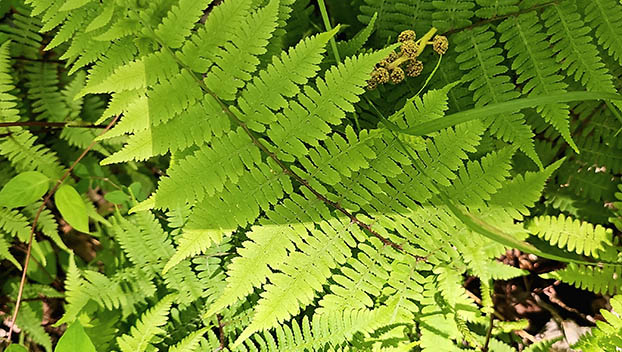Ferns: Old friends and new ones
Published 2:37 pm Wednesday, May 8, 2024
|
Getting your Trinity Audio player ready...
|
I went to art class last week obsessing about woodcocks and how to draw their intricately mottled feathers. I left with thoughts of ferns. Before working on the dreaded woodcock feathers, my instructor and I took a walk in the woods. While we found many interesting plants, including an abundance of showy orchis, spring beauties, and Jack-in-the pulpits, ferns were the stars of the walk. We saw majestic Christmas ferns, small ebony spleenworts, and rattlesnake ferns, as well as delicate Southern lady ferns, and masses of quirky Southern adder’s-tongue ferns.
In over 30 years of walking trails and searching for various plants, I’ve only seen several adder’s-tongue ferns (Ophioglossum pycnastichum). I found one in the middle of a trail at Twin Lakes State Park and another in Lunenburg County. In both cases, I was never able to find these plants again. Adder’s -tongue ferns have been called “Bizarre plants in small packages.” They’re different; they may appear every year, or they may disappear for years before magically reappearing again, so finding hundreds of them on a short hike was amazing.
The lady fern (Athyrium asplenioides) was beautiful and also plentiful. It’s a large, upright, deciduous native fern that’s found throughout the continental United States and Alaska. The fronds are twice-pinnate with finely toothed leaflets. During summer months, distinctive curved, kidney bean-shaped spores develop on the back of the leaflets.
When mature, the lady fern can be 2 to 3 feet tall. It’s a vigorous but slow grower that spreads via rhizomes and forms colonies. Early spring growth provides food for various insects. In summer and fall, the fern provides shelter for small mammals and birds.
Unlike the adder’s-tongue, the lady fern is a low maintenance addition to the shade garden at home. It fills in dark corners, can be used as a ground cover, and isn’t an aggressive grower. It doesn’t mind the high humidity typical of summers in Virginia and is relatively deer resistant.
To thrive, it requires a shady location with well-drained soil that’s rich in organic matter. After the first frost, the dead foliage should be cut back to the ground. In spring, a shovelful of compost is all that the plant needs.
Unexpected walks in new locations are always interesting. Learning how to draw the feathers in a woodcock’s tail can wait for another day. Seize the opportunity to see new plants.
DR. CYNTHIA WOOD is a master gardener who writes two columns for The Herald. Her email address is cynthia.crewe23930@gmail.com.




